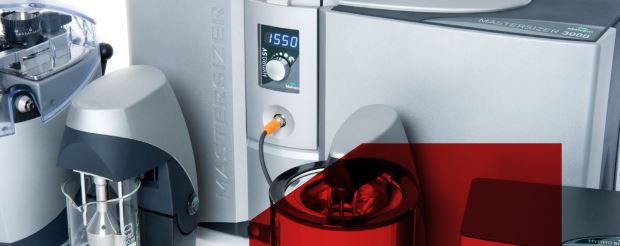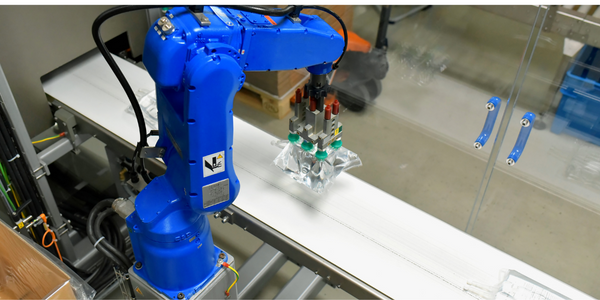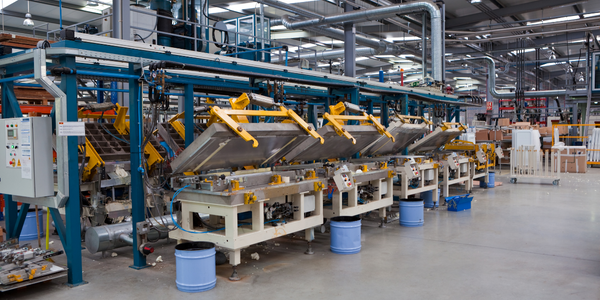Download PDF
Automating Recruitment Process: A Case Study on GQR
Applicable Functions
- Procurement
Use Cases
- Time Sensitive Networking
The Challenge
GQR, a global talent acquisition and advisory firm, was facing challenges in its recruitment process. The firm's internal recruiters were spending extended hours reviewing applications for a few qualifications and then reaching out to candidates to find a time that worked best for both parties. This process was time-consuming, with recruiters allocating 1-2 hours a day scanning applications, emailing candidates individually, getting their availability, and then finally booking them into an available slot. The goal was to gain a competitive advantage in winning recruiting deals, save their internal recruiters time on the first step of the hiring process, and configure AllyO for multiple applications across the company.
About The Customer
GQR is a global talent acquisition and advisory firm that specializes in the procurement of rare talent to the world’s most challenging industry sectors. Over the last 10 years, GQR has cemented their place within the STEM recruiting space globally. An Inc. 500 company for two consecutive years, they have seen a 949 percent three-year revenue growth. The firm aims to gain a competitive advantage in winning recruiting deals and save their internal recruiters time on the first step of the hiring process.
The Solution
GQR decided to automate their recruiting process with AllyO to give time back to their recruiters. The process works as follows: The recruiter posts a requisition on their job board of choice. When an applicant applies, these recruiters are sent an email. This email is scraped for the necessary information and AllyO proactively reaches out to the applicant to continue the screening process. In addition to screening the candidate based on recruiter preferences, once qualified, AllyO schedules them for an interview per the recruiter’s availability. This solution allowed GQR recruiters to focus on what really matters: delivering a fantastic candidate experience.
Operational Impact
Quantitative Benefit
Related Case Studies.

Case Study
Centralizing Data for Improved Efficiency: A Case Study on Malvern Panalytical
Malvern Panalytical, a UK-based hi-tech electronics company, was grappling with the challenge of decentralized data storage. The company had a vast amount of unstructured data scattered across various platforms, from hard drives to emails and floppy disks. This made the data searching process extremely cumbersome and inefficient. The company's rapid growth, from 200 to over 1,000 employees in a decade, and expansion across three continents further exacerbated the need for a more structured and centralized data system. As a company involved in electronics manufacturing and software development, it was crucial for Malvern Panalytical to find a platform that could structure all their data, track all modifications of documents in real time, and provide clear visibility of the internal information flow across all its facilities.

Case Study
Managed Hosting Platform
Formula 1® is a sport where every millisecond matters. With changing preferences and the growth of the digital medium, many fans choose to experience the sport through the F1.com website. The website needs to deliver a superior experience to tens of millions of fans across the world consistently. Hence, it is imperative to have a robust platform that can deliver the required performance and scale with growing trac and dynamic fan expectations. Some of the key challenges are: • Every race weekend, Formula1.com attracts up to 7 million fans. Managing this huge surge in website traffic, requires a scalable hosting platform that can simultaneously allow millions of fans to experience the excitement of the sport seamlessly. • Fans across the globe expect an engaging and immersive experience through enriched and enhanced race content across multiple devices. To meet this requirement Formula1.com needs to have a robust platform that is able to deliver real-time updates and information across screens, be it tablets, TVs or smartphones. • A global brand like Formula 1® needs to ensure it delivers a consistent user experience across all platforms across the globe. This consistent delivery of enriched content cannot be compromised through downtime or any other issue at any point. • In an age where threats to global websites are prevalent, Formula 1® needed a platform that was ready to meet any challenge to its website. They needed a solution that delivers consistency, scalability and yet at the same time is continuously monitored, secure and reliable.

Case Study
Flow Robotics: Scaling Up Production and Accelerating Product Development with IoT
Flow Robotics, a Danish manufacturer, developed flowbot™ ONE pipetting robots to alleviate the strain on bioanalysts in life-science laboratories and hospitals across Europe. These robots were designed to automate part of the testing process, speeding up the time it takes to produce results and reducing pressure on staff. However, the company faced challenges in scaling up production and accelerating product development. High workloads and physically challenging conditions have long been an issue for laboratory professionals. Flow Robotics estimates that around half of medical lab technicians carry out the same arm movements for at least a quarter of their working day. The American Society for Clinical Pathology reported that 85% of laboratory professionals feel burnt out; 36% struggle with inadequate staffing; and 32% face a heavy workload and pressure to complete all testing on time.

Case Study
EDF's Transformation: Enhancing Employee Experience through IT Modernization
EDF, a major UK utilities company, was grappling with a highly customized service management system that was largely manual, with limited potential for automation. This made it difficult to predict or prevent system failures and provide a resilient service. The company's IT system for incident handling was purely manual, leaving no room for modernization. EDF wanted to serve its business and residential customers better by improving the response time to rising energy demands. To achieve this, the company needed to provide its employees with the right tools for improved productivity, better collaboration, and an enhanced IT experience at a reduced cost to serve.

Case Study
Mastercard Exceeds CTR Benchmark by 54% with IBM Watson Advertising Accelerator
In the face of global challenges, brands were required to adapt their communication and outreach strategies. Mastercard, a global technology company in the payments industry, was no exception. The company needed to educate consumers about their partnership with ‘Stand Up to Cancer’ and their campaign to donate up to four million dollars to help fund cancer research. The challenge was to effectively reach and engage consumers, and to do so in a way that would resonate with them and encourage them to take action.






